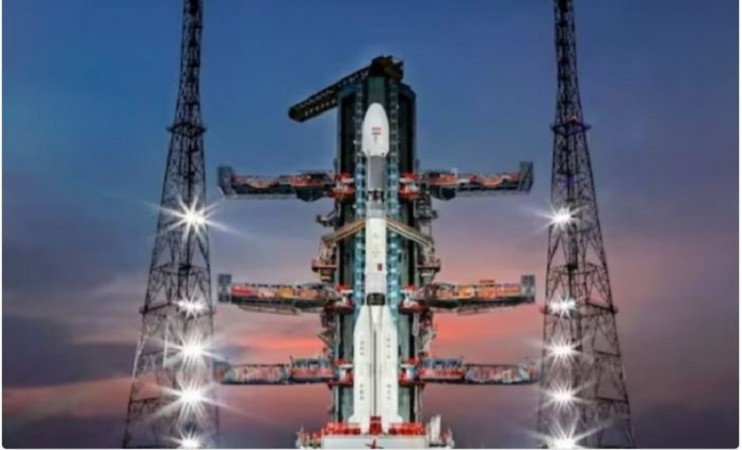
SRIHARIKOTA: On July 14th at 2:35 PM IST, the Indian Space Research Organization (ISRO) has set its sights on launching the Chandrayaan-3 mission. This extraordinary venture will take flight from Sriharikota, propelled by the powerful Mark 3 launch vehicle. Serving as a replica of its predecessor, Chandrayaan-2, which graced the heavens in July 2019, Chandrayaan-3 comprises an orbiter, a lander named 'Vikram,' and a rover known as 'Pragyan.'
However, Chandrayaan-2 encountered a setback during its lunar descent when the lander unfortunately crashed in September, foiling its surface mission. ISRO attributed this mishap to a glitch in the guidance software and an unexpected disintegration of the propulsion system during the descent, which was discovered later. In Chandrayaan-3, the rocket will deploy the payload into an elliptical orbit around the Earth. Subsequently, a propulsion module will take charge, skillfully maneuvering the lander into a circular orbit around the moon. Finally, the lander will gracefully detach itself, executing a series of expert maneuvers before commencing its gradual descent onto the lunar surface, expectedly around August 23-24 of this year.
To enhance the prospects of a triumphant outcome, the lander's legs have been reinforced, its minimum thrust limited, power boosted, and the descent sequence modernized. This ambitious mission signifies India's second endeavor to achieve the successful landing of a lander and rover on the lunar terrain, showcasing its end-to-end capabilities in related technologies. The intricacies of a flawless moon landing must be approached with utmost caution, as even a slight chance of failure exists. However, the rewards of a complete success cannot be underestimated. Such an achievement holds tremendous significance, particularly in the context of India's decision to join the Artemis Treaty. Should the mission prove victorious, India will emerge as the second signatory country to accomplish a rover landing on the Moon.
Undoubtedly, this feat carries immense weight, considering the escalating geopolitical pursuit of establishing a permanent lunar base. Governments, private sectors, and numerous space missions worldwide are diligently working towards this objective. While the agreement reveals a coalition of countries led by the US, China, and Russia, collaborating on an 'international lunar research centre,' Chandrayaan-3's triumph would position it as the most proximate surface mission to the Moon's south pole.
This region is distinct from the Moon's surface characteristics as it remains perpetually shadowed. The mission encompasses six scientific payloads dedicated to studying these unique features and more. Furthermore, a seventh instrument aboard the propulsion module will capture images that could unveil signs of life on Earth. Such discoveries might aid scientists in identifying similar telltale signs on planets beyond our solar system. In essence, Chandrayaan-3 holds the potential to reshape the world's perception of the Moon's growing significance within scientific and political domains.
Chandrayaan-3: Spacecraft Successfully Joined with Rocket for Upcoming Launch
Launch Date for Chandrayaan-3 likely on July 13; ISRO Chairman